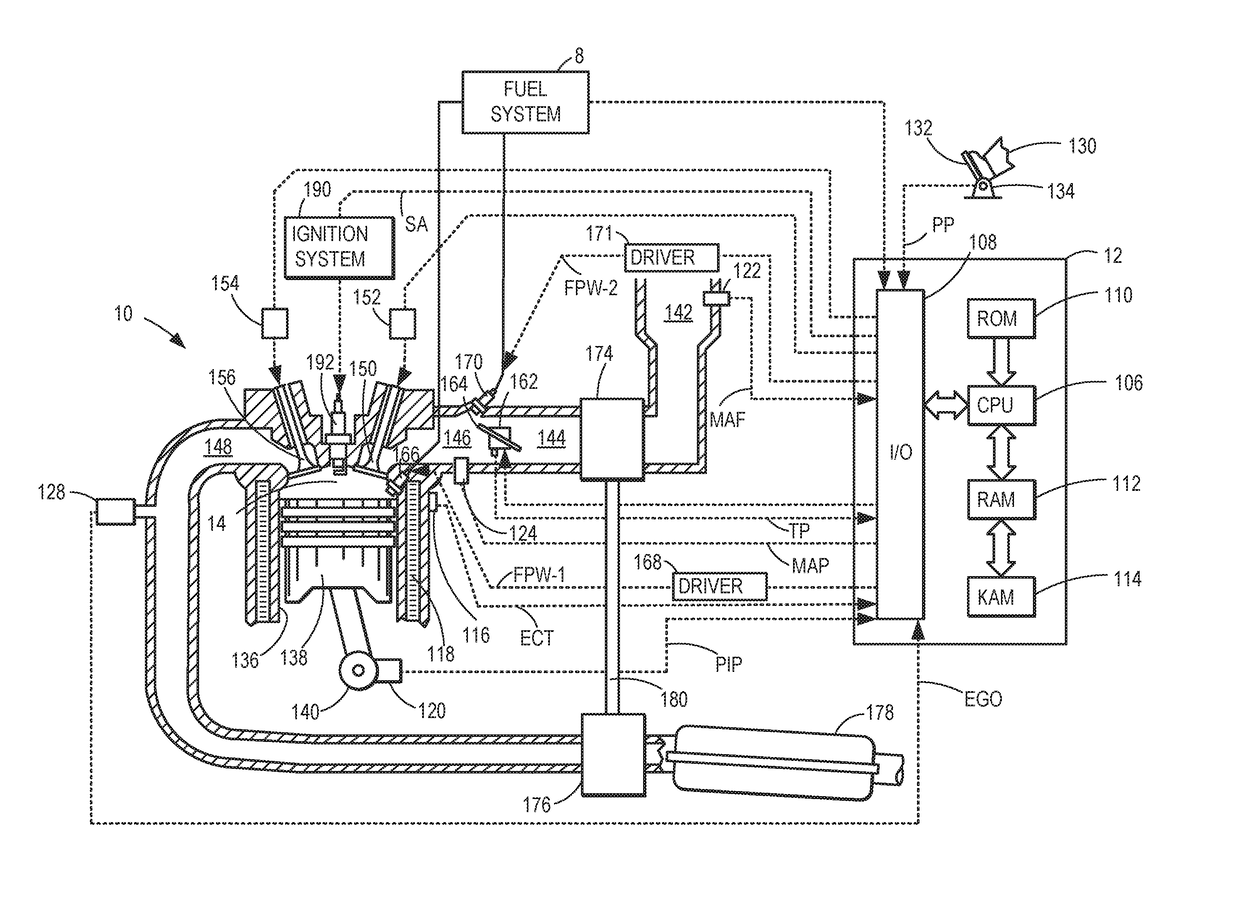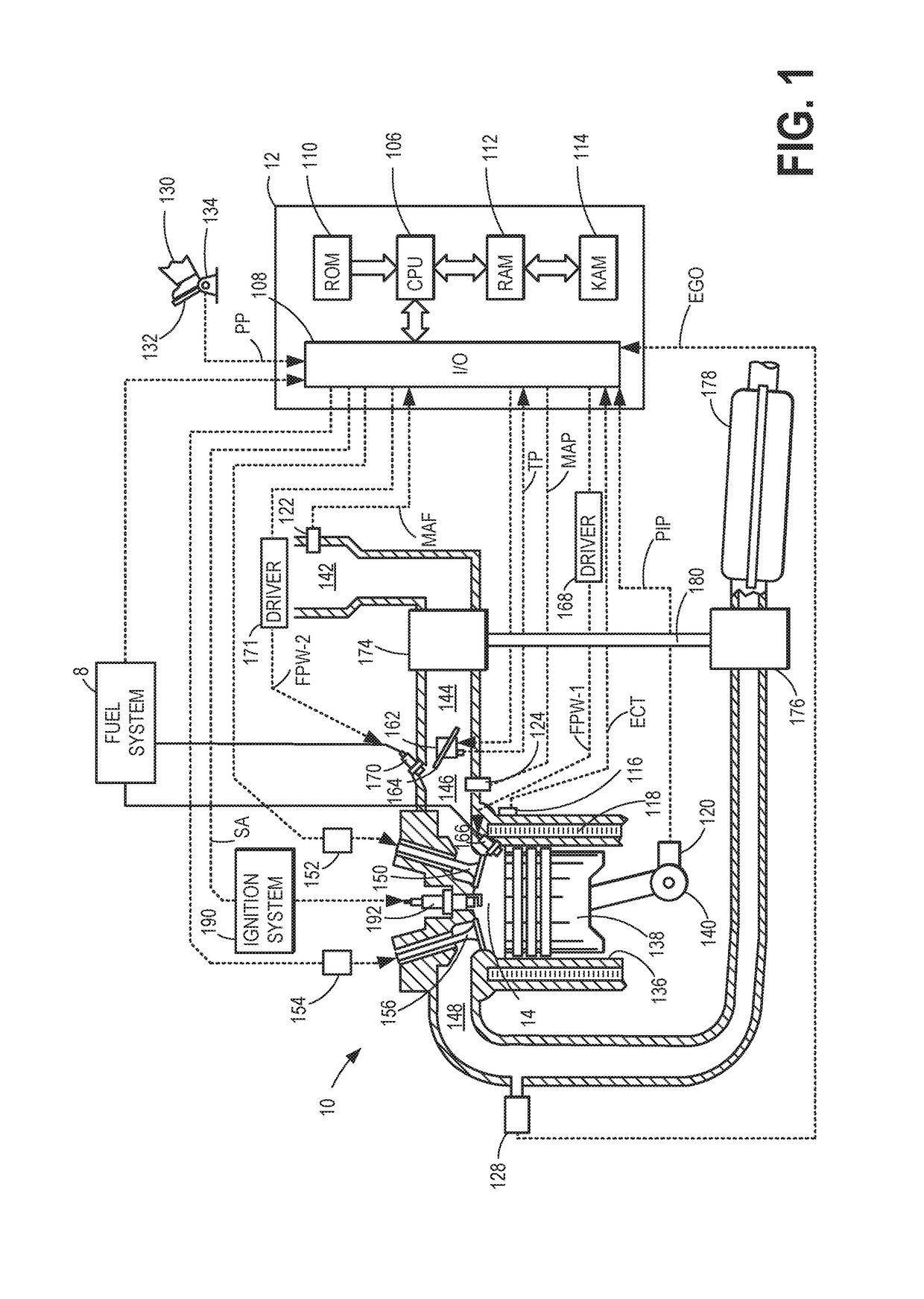Methods and systems for dual fuel injection
a dual fuel injection and fuel injection technology, applied in the direction of fuel injection control, electric control, machines/engines, etc., can solve the problems of affecting the profile, slow cranking speed, and affecting the stability and robustness of combustion, so as to improve the cooling of the cylinder and reduce the emission of particulate matter, the effect of increasing the compression ratio
- Summary
- Abstract
- Description
- Claims
- Application Information
AI Technical Summary
Benefits of technology
Problems solved by technology
Method used
Image
Examples
Embodiment Construction
[0012]The following detailed description provides information regarding adjusting fueling of a vehicle engine during an initial number of combustion events of an engine start to improve combustion stability until the engine exits cranking speeds. An example embodiment of a cylinder in an internal combustion engine configured for each of port and direct injection is shown at FIG. 1. A controller may be configured to perform a control routine, such as the example routine of FIG. 2, to selectively trim a port and direct injection fuel pulse responsive to a decrease in fuel mass commanded during an initial number of combustion events of an engine start. Example fuel injection adjustments to direct and port injection fuel pulses during an engine start are shown at FIG. 3.
[0013]Regarding terminology used throughout this detailed description, port fuel injection may be abbreviated as PFI while direct injection may be abbreviated as DI.
[0014]FIG. 1 depicts an example of a combustion chamber...
PUM
 Login to View More
Login to View More Abstract
Description
Claims
Application Information
 Login to View More
Login to View More - R&D
- Intellectual Property
- Life Sciences
- Materials
- Tech Scout
- Unparalleled Data Quality
- Higher Quality Content
- 60% Fewer Hallucinations
Browse by: Latest US Patents, China's latest patents, Technical Efficacy Thesaurus, Application Domain, Technology Topic, Popular Technical Reports.
© 2025 PatSnap. All rights reserved.Legal|Privacy policy|Modern Slavery Act Transparency Statement|Sitemap|About US| Contact US: help@patsnap.com



